![]() Per la versione in Italiano: https://www.stradeeautostrade.it/tecnologie-e-sistemi/fibra-e-video-analisi-intelligenti-quando-lunione-fa-la-sicurezza/
Per la versione in Italiano: https://www.stradeeautostrade.it/tecnologie-e-sistemi/fibra-e-video-analisi-intelligenti-quando-lunione-fa-la-sicurezza/
The phrase “prevention is better than cure” has become a mantra in many fields. And if it applies to our health, it is all the more important for the safety of roads, buildings, construction sites and infrastructure.
Being able to see alien elements in advance, being able to detect the signs of possible malfunctions or suspicious movements, being able to register even minor anomalies, means being able to act promptly and avoid bigger problems.
In this sense, the great steps forward made by digital technology offer ever more futuristic solutions to guarantee reliability and efficiency at the highest level.
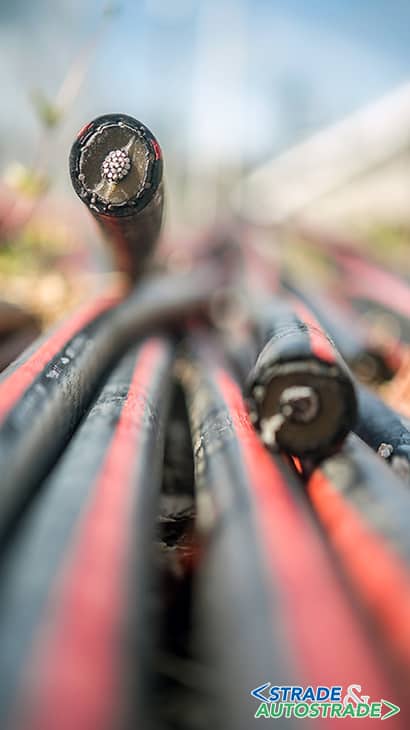
In particular, the integration between optical fibre and video analysis technologies – which NTSG Italia has developed through its research and development centre – offers a great opportunity to increase the degree of safety in the monitoring phases, while also allowing for a significant optimisation of the management and maintenance costs of the works (https://26635338.hs-sites-eu1.com/it-it/gruppo-monit-offerta-completa-1).
Thanks to its long experience in the field of optical fibres, in which it is the European market leader through its parent Company Mon-it and in which it holds the exclusive patents OF System and Of Pipe, Ntsg Italia has been able to increase its already high standards of fibre systems by making use of the latest innovations in the field of digital vision: such monitoring innovation combines the evident added values of both technologies.
Optical fibre systems
Indeed, optical fibre systems boast high-performance characteristics that are recognised worldwide. They are not affected by environmental changes; they are very durable; they do not require power supply (passive sensors); they guarantee, through dedicated sensors, the collection of a virtually unlimited amount of data in real time; they are non-invasive; and they can be rapidly applied to any type of structure.
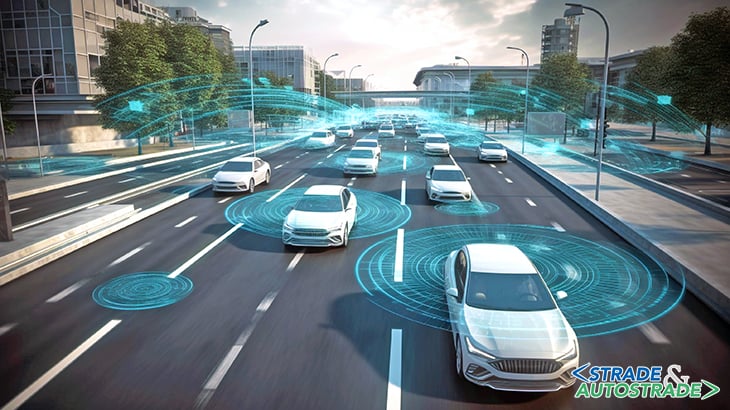
On the other hand, video analysis systems, boosted by the latest digital innovations and artificial intelligence, make it possible to expand the incoming information and integrate it with that of fibre systems in a single platform for collection, analysis and interpretation.
Thus, in addition to the ability of fibre systems to recognise movements, twists, leaks or structural anomalies, video analysis systems allow to recognise faces, number plates, vehicles, the accessing and crossing of off-limit areas, as well as to monitor indoor and outdoor areas, track the movements of people and vehicles and monitor the operation of machinery and vehicles, the opening and closing of entrances and so on.
Static video surveillance systems can be complemented by dynamic ones, such as the latest generation of drones that can perform georeferenced surveys and show the progress of construction sites, approaching vehicles and traffic problems, or such as vehicle-mounted cameras that can monitor the state of the road surface, signs and billboards.
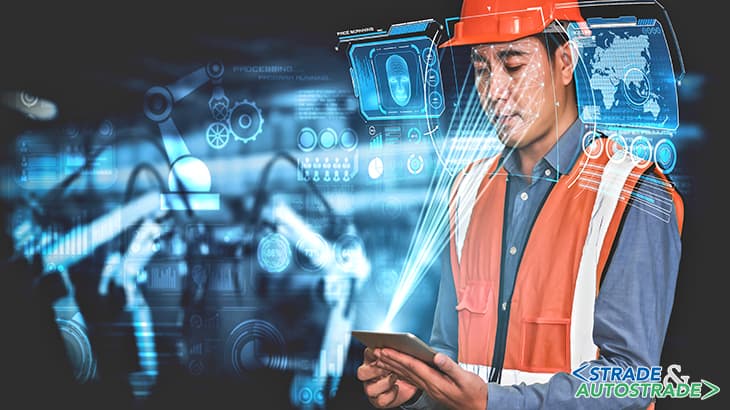
The connection between the two systems does not only constitute a merging and integration of data in the same platform, but goes as far as generating a true dialogue between fibre and video-analysis, whereby the recording of the data also becomes its processing and further investigation.
This is the case with the pointer system, in which the sensor, prompted by a possible anomaly, sends the signal in real time to a motorised camera, which orients itself according to the point at which the signal occurs and follows the development of the anomaly detected.
Thus, the neutral data can not only be better classified but also followed in its evolution, allowing operators to take rapid and better-informed action. A further example of an integrated application can be that of monitoring the containment of road slopes, a very relevant issue in today’s complex period in terms of rainfalls.
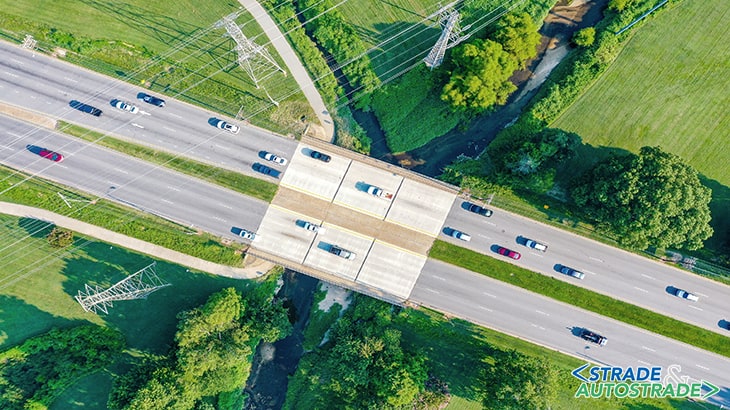
Long periods of drought alternating with particularly heavy and violent downpours can subject slopes and road sides to the danger of landslides, especially those with a high gradient, with all the risks that this entails for users.
For monitoring interventions of this type, NTSG Italia has set up an integrated solution of video analysis and optical fibre sensors that module coverage of 10,000 square metres of visible frontage, with marking systems detected from fixed self-sufficient vision stations and fibre laid along the retaining nets.
In this way, the most hazardous points on road slopes can be constantly monitored in terms of their stability and any changes in their condition are reported in real time. However, there are many other fields of application for such an integrated system.
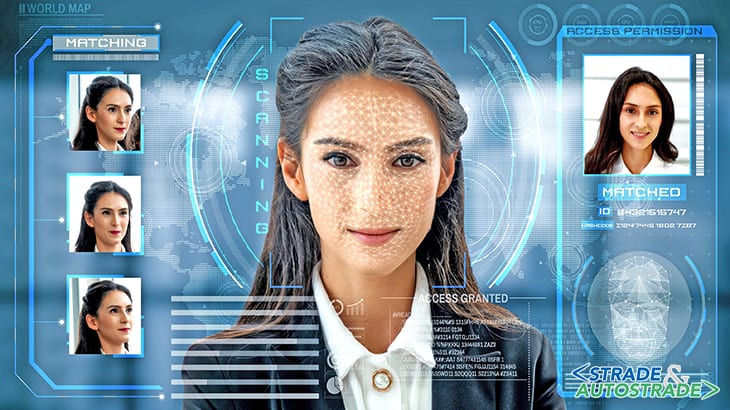
One of the environments in which it appears most suitable is the shipbuilding industry. The integration of fibre with vision makes it possible to carry out differential weighing functions for lorries entering a construction site.
Indeed, the smart reading of the number plates of each incoming truck is associated with its weight, which is detected by the sensors located in the area, and the difference is then calculated on the way out.
Similarly, a single camera can point at an object, following and storing its routes. This is a useful function, for example, for cars, in order to assess where they are parked and the number of people coming out of them, and consequently verify that it corresponds to the one recorded by the entry guard.
Also at construction sites, an active dialogue between video analysis and sensors deployed on the optical fibre makes it possible to define danger zones, recognising and tracking people who ignore danger warnings.
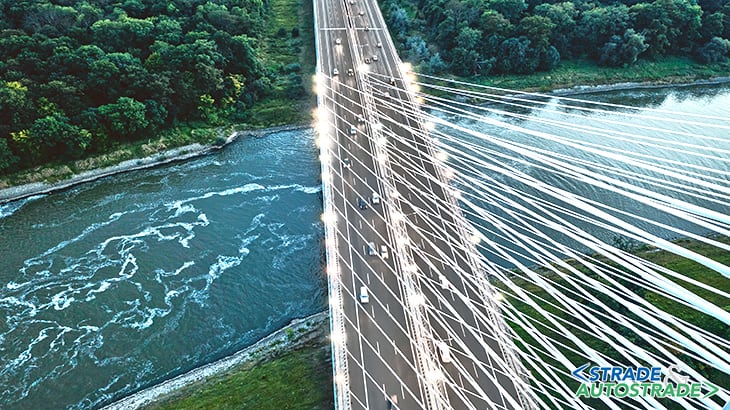
The fibre recognises the crossing and provides the coordinates to the camera that frames the area of interest and again memorises the routes taken, being able to activate facial recognition technology if required.
Enclosed infrastructures, bridges, tunnels, construction sites: there are no limits to the need for security for people, structures and information. Similarly, the solutions that can be applied in order to ensure everything is kept under control are increasingly sophisticated. After all, monitoring is always better than recovery.
![]() Per la versione in Italiano: https://www.stradeeautostrade.it/tecnologie-e-sistemi/fibra-e-video-analisi-intelligenti-quando-lunione-fa-la-sicurezza/
Per la versione in Italiano: https://www.stradeeautostrade.it/tecnologie-e-sistemi/fibra-e-video-analisi-intelligenti-quando-lunione-fa-la-sicurezza/

